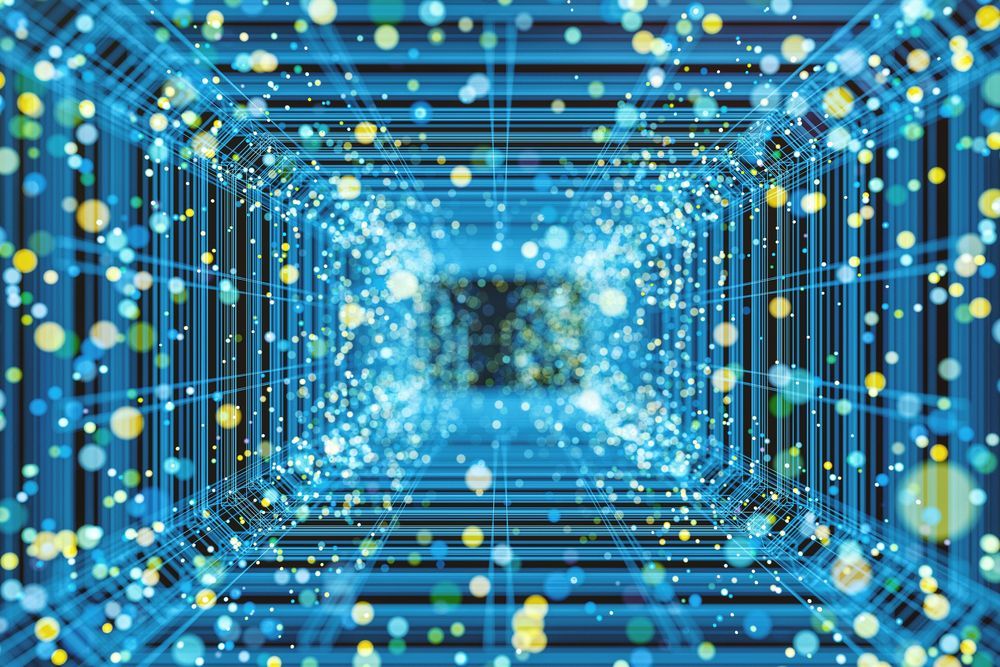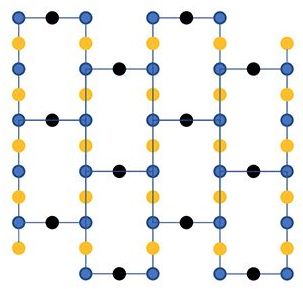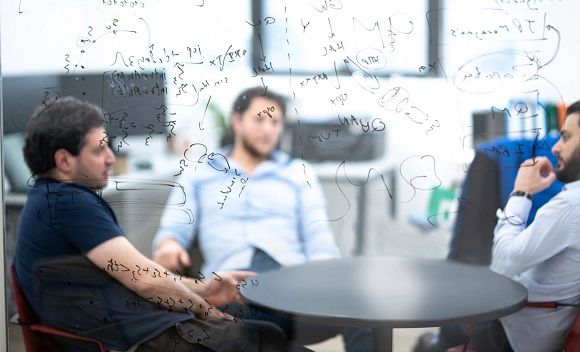A downsized version of the company’s Sycamore chip performed a record-breaking simulation of a chemical reaction.


With a pig-filled demonstration, Neuralink revealed its latest advancements in brain implants this week. But what do scientists think of Elon Musk’s company’s grand claims?
This 3D-printed bunny could be the future of data storage via Seeker.


Although we are currently in an era of quantum computers with tens of noisy qubits, it is likely that a decisive, practical quantum advantage can only be achieved with a scalable, fault-tolerant, error-corrected quantum computer. Therefore, development of quantum error correction is one of the central themes of the next five to ten years. Our article “Topological and subsystem codes on low-degree graphs with flag qubits” [1], published in Physical Review X, takes a bottom-up approach to quantum error correcting codes that are adapted to a heavy-hexagon lattice – a topology that all our new premium quantum processors use, including IBM Quantum Falcon (d=3) and Hummingbird (d=5).
Many in the quantum error correction community pursue a top-down computer science approach, i.e., designing the best codes from an abstract perspective to achieve the smallest logical error rate with minimal resource. Along this path, the surface code is the most famous candidate for near-term demonstrations (as well as mid- to long-term applications) on a two-dimensional quantum computer chip. The surface code naturally requires a two-dimensional square lattice of qubits, where each qubit is coupled to four neighbors.
We started with the surface code architecture on our superconducting devices and demonstrated an error detection protocol as a building block of the surface code around 2015 [2]. While the experimental team at IBM made steady progress with cross-resonance (CR) gates, achieving gate fidelities near 99%, an experimental obstacle appeared along the path of scaling up the surface code architecture. The specific way to operate the CR gates requires the control qubit frequency to be detuned from all its neighboring target qubits, such that the CNOT gates between any pair of control and target can be individually addressed.
Windows 10 : https://www.gamefun365.com/microsoft-windows-10-pro-1-license-key-global.html
Office 2019:https://www.gamefun365.com/microsoft-office-2019-pro-plus-key-global.html
Office 2019 Home And Business Mac : https://www.gamefun365.com/microsoft-office-2019-home-and-bu…lobal.html
Support me on Patreon: https://www.patreon.com/coreteks
Buy a mug or a t-shirt: https://teespring.com/stores/coreteks
Visit: http://coreteks.tech/
Thanks to Charbax for letting me use some footage from his excellent interview with Steve Furber, here: https://www.youtube.com/watch?v=_VYxIaw1kBU&t=62s
I now stream at:
https://www.twitch.tv/coreteks_youtube
Follow me on Twitter: https://twitter.com/coreteks
Follow me on Instagram: https://www.instagram.com/hellocoreteks/



The technology behind the quantum computers of the future is fast developing, with several different approaches in progress. Many of the strategies, or “blueprints,” for quantum computers rely on atoms or artificial atom-like electrical circuits. In a new theoretical study in the journal Physical Review X, a group of physicists at Caltech demonstrates the benefits of a lesser-studied approach that relies not on atoms but molecules.
“In the quantum world, we have several blueprints on the table and we are simultaneously improving all of them,” says lead author Victor Albert, the Lee A. DuBridge Postdoctoral Scholar in Theoretical Physics. “People have been thinking about using molecules to encode information since 2001, but now we are showing how molecules, which are more complex than atoms, could lead to fewer errors in quantum computing.”
At the heart of quantum computers are what are known as qubits. These are similar to the bits in classical computers, but unlike classical bits they can experience a bizarre phenomenon known as superposition in which they exist in two states or more at once. Like the famous Schrödinger’s cat thought experiment, which describes a cat that is both dead and alive at the same time, particles can exist in multiple states at once. The phenomenon of superposition is at the heart of quantum computing: the fact that qubits can take on many forms simultaneously means that they have exponentially more computing power than classical bits.

Technologies that rely on quantum bits (qubits) require long coherence times and high-fidelity operations1. Superconducting qubits are one of the leading platforms for achieving these objectives2,3. However, the coherence of superconducting qubits is affected by the breaking of Cooper pairs of electrons4,5,6. The experimentally observed density of the broken Cooper pairs, referred to as quasiparticles, is orders of magnitude higher than the value predicted at equilibrium by the Bardeen–Cooper–Schrieffer theory of superconductivity7,8,9. Previous work10,11,12 has shown that infrared photons considerably increase the quasiparticle density, yet even in the best-isolated systems, it remains much higher10 than expected, suggesting that another generation mechanism exists13. Here we provide evidence that ionizing radiation from environmental radioactive materials and cosmic rays contributes to this observed difference. The effect of ionizing radiation leads to an elevated quasiparticle density, which we predict would ultimately limit the coherence times of superconducting qubits of the type measured here to milliseconds. We further demonstrate that radiation shielding reduces the flux of ionizing radiation and thereby increases the energy-relaxation time. Albeit a small effect for today’s qubits, reducing or mitigating the impact of ionizing radiation will be critical for realizing fault-tolerant superconducting quantum computers.